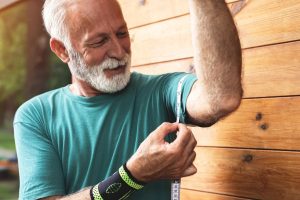 A little bit of muscle loss is a natural part of getting older. Most lose about one percent of muscle mass each year after 40. It’s called sarcopenia.
A little bit of muscle loss is a natural part of getting older. Most lose about one percent of muscle mass each year after 40. It’s called sarcopenia.
But muscle loss can be enhanced by an injury, illness, or any prolonged period of inactivity. This can lead to muscle atrophy and bring on weakness, poor balance, and frailty.
Advertisement
People over 65 are particularly vulnerable to muscle atrophy. It can take much longer for the body to recover from muscle loss. However, muscle atrophy can be defended against regardless of age with the proper approach.
Atrophy can be common in people with osteoarthritis. The condition makes staying active difficult and encourages a sedentary lifestyle. Muscle atrophy can lead to:
- Weakness in the upper limbs, making it difficult to raise arms and reach for elevated objects
- Difficulty opening jars, holding a pen, typing on a keyboard, buttoning a shirt
- Muscle twitching or cramps
- Trouble balance
Muscle atrophy may not always occur after a physical setback. A period of downtime is ultimately determined by your health, activity levels, and muscle mass going into it.
If you’re regularly active, it is a lot easier to prevent muscle loss over a period of downtime.
Virtually everybody will lose some muscle when they become inactive. Thankfully, it can come back relatively quickly by re-engaging inactivity.
You can give yourself the best chance against falling victim to muscle atrophy and weakness by engaging in muscle- and strength-building activities.
Advertisement
Weight training, or resistance training, uses any form of resistance to target muscles in the upper and lower body and is the best form of exercise for muscles. Doing this three times per week will help.
Any load-bearing exercise can help, and getting more active, even walking, can help.
If you want to get stronger to prevent the pitfalls of muscle loss, talk to a fitness professional who can help you learn safely.
